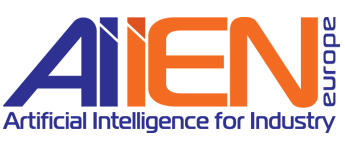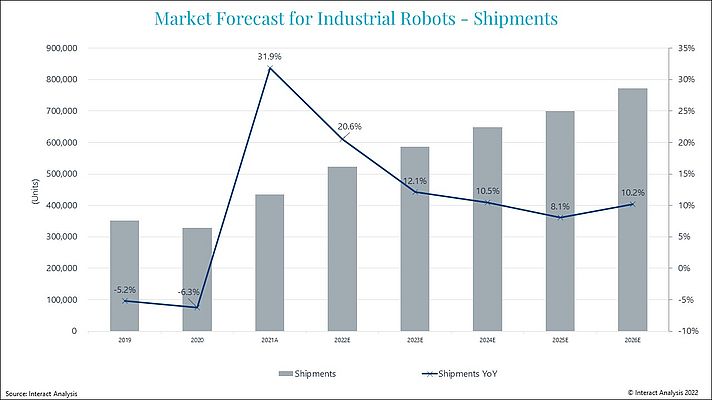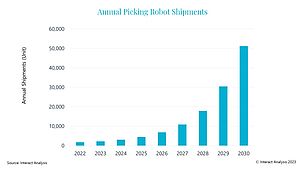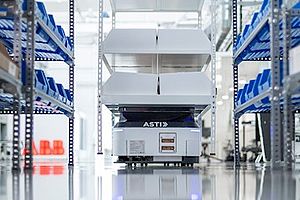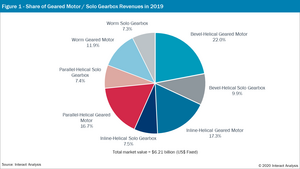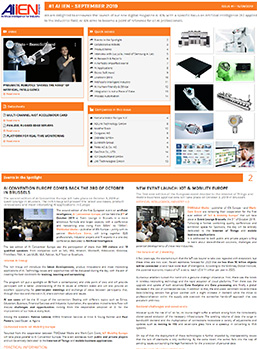After a 2-year period of contraction, industrial robot shipments saw a YoY (year-on-year) increase of over 30% in 2021, according to new research published by Interact Analysis. Pre-pandemic, the industrial robot sector was considered relatively mature, enjoying moderate, stable growth, but COVID and the extended labor shortages that followed have caused an increased enthusiasm for manufacturing automation which has turbo-charged the robot industry. Moreover, many manufacturing companies are investing in automation as a form of ‘future-proofing’ to prepare them for future emergencies.
The industrial robot market was worth over $11.8 billion in 2021 with over three quarters of this value represented by articulated robots. By 2026, the market will be worth almost $20 billion, with articulated robots' ratio slightly decreased but still accounting for over 70% of this. However, it will be collaborative robots (cobots) that will see the most success in new markets and applications.
However, short-term worries remain. These worries include new waves of COVID causing lockdowns in China, inflation, and impending recession. And the most important, worsening supply chain issues have kept production and demand growth out of sync.
Interact Analysis previously forecasted a steady decline in the average selling price of industrial robots. But, as a result of global supply chain issues, there were dramatic pricing increases in the industrial robot market in 2021. It is likely that price increases will continue through 2022 due to ongoing economic uncertainty.
Maya Xiao, Senior Analyst at Interact Analysis, says, “This new piece of industrial robot research has been the largest revision to our forecasts that we’ve had to undertake since we started to track the robotics industry in 2018. The long-term outlook for industrial robots is bright – significantly brighter than it was pre-pandemic. I think it’s fair to say that COVID has caused the most conservative of factory managers to consider the benefits of advanced industrial automation. However, the short-term issues are grave. In particular, there are problems in Europe where the Ukraine conflict is a real threat to the industrial automation sector because the reduction in business confidence is delaying the sorts of large investment decisions that are needed to implement automation projects.”
About the Report:
This edition constitutes the largest revision to Interact Analysis' forecasts since they started tracking the robotics industry in 2018. COVID had a larger-than-anticipated (and, of course, not just negative) impact on the penetration of robots in the short term (2020 and 2021) and it will continue to have an effect in the medium- and long-term (2022- 2026). Pre-pandemic, the industrial robot sector had been mature, enjoying moderate, stable growth, but since COVID, increased enthusiasm for automation in the manufacturing sector has turbo-charged the industry. However, long-term bullishness cannot hide short-term worries.
The all-new industrial robots report shows the change in the market is so strong that lots of well-established companies in the industrial robot value chain are coming to Interact Analysis to get an understanding of the new market forces that have come into play. Readers will get answers to their most pressing questions – how the long-term impact of COVID-19 on the market? How fast will the market grow over the next five years? Which industry and application segments offer the greatest opportunity? The advice to robot companies is simple: prepare for much stronger long-term growth than you’ve been used to in recent years.
